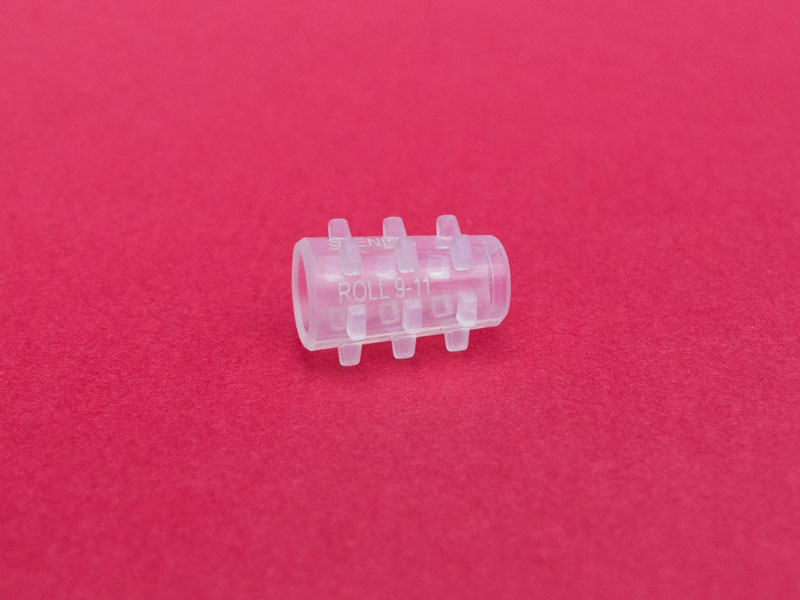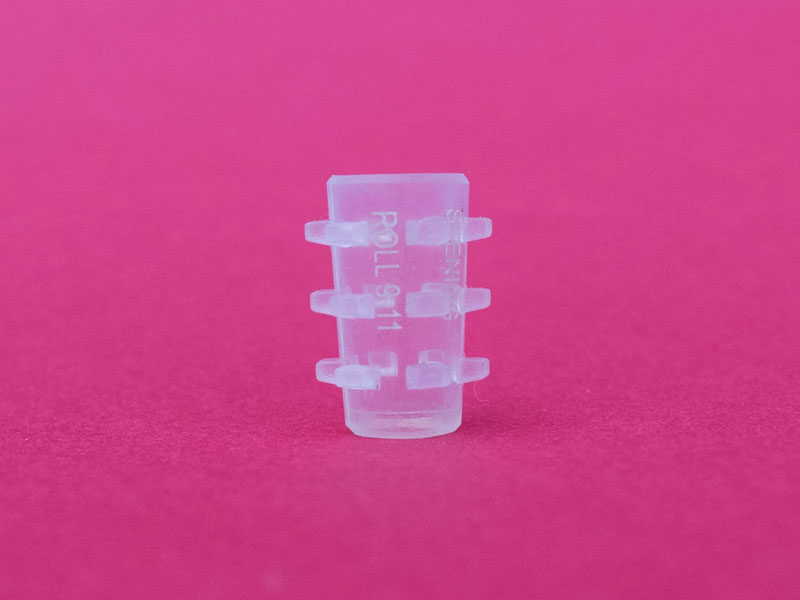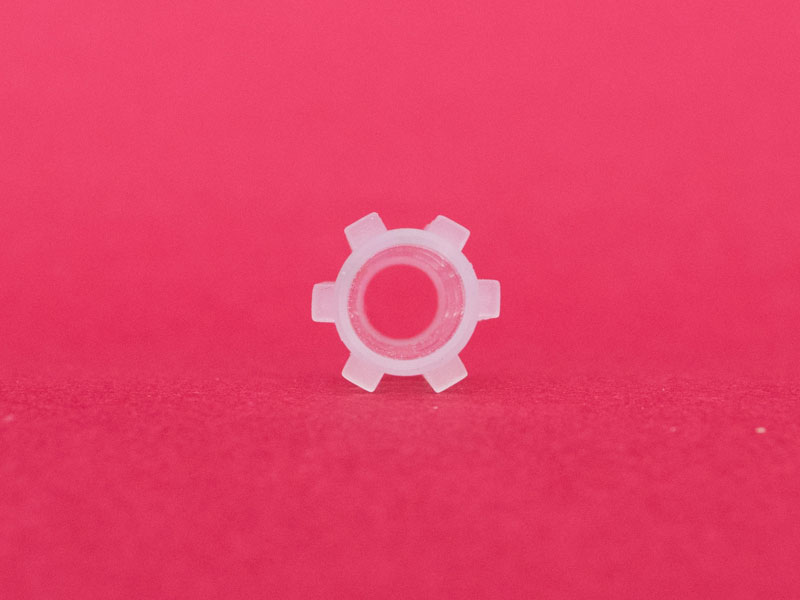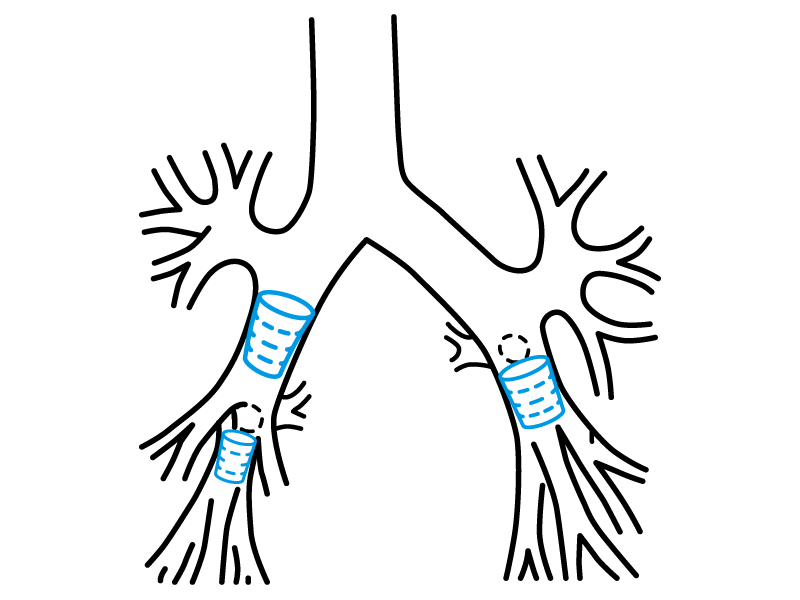Stening® Roll 911
Code ROLL
Descripción
The Stening® Roll 911 is the Stening response to the clinical need on carrying out diseases treatments for small bronchi, but that are still capable of providing ventilation to its distal segments. This can be seen in the neoplastic infiltrations in the lower lobar bronchi both right and left ones.
In this way, the interventionist and therapeutic bronchoscopy extends its scopes and Stening accompanies it with the development of devices that can be applicable in minor bronchi. As well as in peripheral ones and those with low resistance on their thin walls. These force the experts’ skills to increase the scopes of the intravenous surgical treatments of the airway.
The Stening® Roll 911 is a special stent for common trunk of the basal segments of the lower lobes (left and right).
Due to this, the stent possesses smaller anchors and a larger distribution that provide a smooth support and with more distribution points of its loads. So that, its short dimensions make possible its fitting inside the bronchus that is going to be treated. Its anatomic shape copies the bronchus’ conical shape, avoiding the distortion produced by the classical stents with a cylindrical shape.
The measure of preference is detailed on the Roll 911, with a distal external diameter of 9mm and a proximal one of 11mm. The length is 20mm.
For the individual anatomic variations we have two more types: the Roll 810, with a length of 20mm and the Roll 1012, with a length of 25mm. The last one is a special one for the intermediate bronchus. It permits the air flux without occluding the apical entrance of the lower one, when this segment is unscathed. In this way, it is possible to effectuate treatments on the intermediate bronchus without interfering with the ventilation of other segments.
The Stening® Rolls can be cut on their margins to fit the length of the bronchus where they are implanted. Effectuate the section on its proximal margin, because this one does not confront any bronchial spur during the respiratory dynamic.
A stent implant inside the common trunk of the lower lobar can end in an occlusion on the entrance of the apical segment. The doctor must evaluate the benefits of restoring the ventilation of the basal ones in spite of the loss of the apical from the lower one. This must be done when this last one would not be affected by the neoplastic disease.
- A complete or partial obstruction of the lower lobar bronchus with unscathed basal ones.
- A complete or partial obstruction of the common trunk of the basal ones in the lower lobe (right or left).
- A complete or partial obstruction of the intermediate bronchus.
- A combination of the ones above.
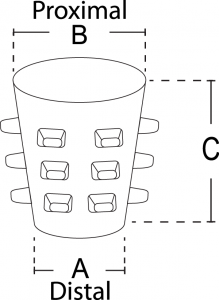
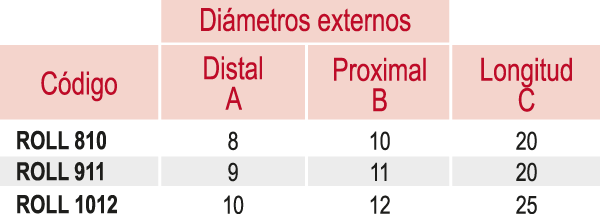
The manoeuvres for the implant of the Stening® ROLL emulate the ones needed for the insertion of a classical bronchial stent. The division spurs of the basal segments stop the stent and do not let its implant in a non-wanted place. For its implant, every type of the Stening® ROLL can be introduced through the bronchoscope number 8 or through a bronchoscope of a larger diameter. Once the endoscope is located in the proximity of the intermediate bronchus or the lower one (it depends on the case we are in), introduce the Stening® ROLL, lubricated and plicate, by the bronchoscope margin. Then push it with the bronchoscopy clamp until it abandons the endoscope through the opposite margin and sets in the bronchus interior. A charger can be used as well and its pusher for bronchoscopes number 8, 9 or the one you prefer. At the moment of charging the stent inside the bronchoscope remember that the largest margin of the ROLL (letter “B” in the scheme) must be located in a proximal position so that it ends “looking to the surgeon”. In the other way, the narrowest margin will occupy the distal position. The removal results quite easy when compared to the one that must be done for a classical stent. That is because of the small size of the Stening® ROLL.
Perform frequent nebulisations with a warm isotonic saline solution. Perform a periodic check-up following your doctor’s advice.
The product should not be reused because this can cause cross contamination.


